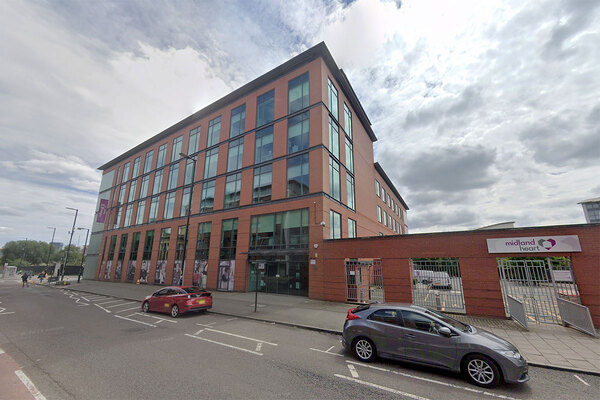You are viewing 1 of your 1 free articles
Five things we learned from Homes England’s Affordable Homes Programme data
Homes England has released data which shows how the nearly £2bn of funding spent through its Shared Ownership and Affordable Homes Programme has been allocated between 2016 and 2021. Stephen Delahunty unpicks the numbers and discusses five key things the figures reveal
The Affordable Homes Programme is the primary channel for funds to be distributed to housing associations and local authorities to build new homes.
Since it was first launched in the early 2010s, it has dished out billions of pounds to providers to build hundreds of thousands of affordable homes. The last five-year settlement, covering the period between 2016 and 2021, was the biggest yet, with the government committing £9bn across the country.
Last month Homes England publish its latest data, which showed how money has been distributed through the funding programme.
An important caveat for this data is that it does not include figures for London, as funding is controlled by the Greater London Authority.
It also does not include grant funding given by Homes England to its strategic partners.
The allocations listed in the breakdown are also confirmed commitments by Homes England to fund schemes, based on the data that organisations have submitted.
Allocations can change over time as organisations may no longer be able to proceed with the approved development or circumstances result in the scheme being no longer eligible for funding.
The data also includes the number of homes partners have committed to delivering outside of the grant program over the same period.
With all of this in mind, Inside Housing has crunched the numbers and has picked out the five things you need to know about the data.
Less than 10% of the grant money has been spent on social rent
Of the 60,905 homes that were built using grant money, 26,194 were pledged for affordable homeownership, 29,337 for affordable rent and just 5,374 were built for social rent.
Some of this may be down to social rent only becoming a tenure that could be funded through the programme in late 2017, but the number of homes is still far down on other tenure types.
Homes England has previously made it clear that it is only accepting bids for social rent funding from providers that can demonstrate they are delivering homes in high affordability pressure areas.
The non-departmental public body used allocate on the basis of the ‘80/20 rule’, which directed 80% of government funding for housing supply at ‘maximum affordability areas’.
The formula used a ratio of median house prices to median work place-based household income figures and set an affordability ratio of 8.8 times earnings. This meant money was disproportionately channeled to the South East of England, with £1 in every £5 of funding from certain Homes England funding streams going to areas representing just 43% of the population.
But housing secretary Michael Gove announced that the controversial formula was being scrapped last month as part of his flagship Levelling Up White Paper plans. This could see a redistribution of funds for social rent in the latest £11.8bn five-year programme covering 2021 to 2026.
The North West received the most funding, but the South still built the most social rent homes
The North West of England received the most funding (£606m) and built around 16,000 homes across all tenures, followed by the West Midlands (£297m) and the South East (£275m).
The region pledged the most homes for affordable homeownership (6,842) and affordable rent (8,741).
But it was the South East that pledged the most, with 1,262 homes being allocated for social rent.
The North East was allocated the lowest amount for social rent homes at just 82, despite £219m overall in funding.
The East Midlands received the least amount of grant money (£185m) and as a result it pledged the fewest number of homes across all tenures (5,105).
The South East and South West combined built the most homes for social rent at 2,000 homes – more than a third of the total.
As they are regions with a high house price to earnings ratio, they will have benefited from the 80/20 rule before it was scrapped.
Dozens of areas did not build any social rent homes
While the overall regional data shows that homes of all tenures were allocated during the funding period, some towns and cities appeared to miss out on certain tenures altogether.
Inside Housing has drilled down into the regional data to find 29 areas where no homes were built for social rent, such as Plymouth, Isle of White and Merseyside.
Despite the North West receiving the most funding overall, areas including Merseyside, Fylde Coast, the Pennines Lancashire and Mid Lancashire did not complete any social rent homes.
Outside of the North West, Plymouth in Devon did not build any homes for social rent.
Plymouth Council acknowledged there was a shortage, but insisted that it does “the very best we can with the funding available to us from government policy”.
A spokesperson added: “Plymouth is not in a social rent eligible area, which means there is less central funding available for housing developers to build new homes for social rent.
“Despite this, we have been proactive in helping to deliver 641 social rent homes in the past 10 years, many of which were delivered outside of Homes England grant funding through the planning process. In addition, there are 66 social rent homes currently under construction and 137 in the pipeline to be built in the next few years.”
Ten areas built no homes for affordable rent, including The Midlands and Devon, but every region completed some homes for affordable homeownership.
Local authorities continue to get in on the act
It is not just housing associations that have benefited through the scheme. Sixty councils received £183m in funding – around 9% of the total – and pledged to build 4,850 homes across all tenures.
Wigan (£17.1m), Newcastle (£13.8m) and Rotherham (£12.3m) were the local authorities that received the most funding.
With 475 homes, Newcastle built more properties than Wigan, which built 460, followed by Rotherham, which built 349.
At the lower end of the scale, Ashfield, which has a population of around 127,000, was allocated just four homes at affordable social rent at a cost of £160,000.
Derby Council received the least amount of funding, with £25,000 for just one affordable rent commitment.
A number of city councils did not build any for social rent, including Cambridge, Manchester and Sheffield.
At the same time, Salford Council committed to the most social rent homes (87) followed by Reading (81) and Cornwall (81).
Around two-thirds of local authorities did not make any commitments for affordable homeownership tenures and 13 councils did not pledge any for affordable rent.
Only a small number of for-profit providers are using grants
Of the more than 50 for-profit providers that are registered with the Regulator for Social Housing, just eight accessed the programme last time round, with the organisations receiving £104m in total.
Of those providers, 3,562 homes were pledged across all tenures, including 191 for social rent.
Heylo, which has a portfolio of more than 4,000 homes across 320 local authority areas, received most of the funding at £61.5m, followed by the Blackstone-owned Sage with £18.4m.
Heylo only committed to building 1,950 homes for affordable homeownership, while Sage built 444 homes across all tenures, including 33 at social rent.
The Grainger Trust is another for-profit provider that was listed as receiving no money under the scheme, but it committed to 32 homes for affordable rent.
It explained that it owns and operates intermediate and affordable housing predominantly without grant funding as it is fully funded by parent company Grainger.
A spokesperson for the Grainger Trust added: “This enables Grainger Trust to deliver exceptional value for money for residents and social value for communities, leveraging Grainger Plc’s operating platform and balance sheet. At the end of September 2021, Grainger Trust owned and operated 878 affordable homes and has a strong growth plan linked to Grainger’s £1.9bn investment pipeline.”
Its parent company is one of the UK’s biggest private landlords with around 8,000 homes.
Sign up for our development and finance newsletter
Already have an account? Click here to manage your newsletters















